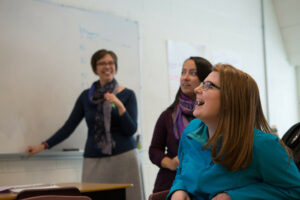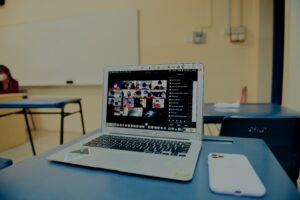
Photo by Kimberly Farmer on Unsplash
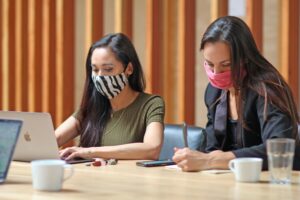
Photo by Raychel Espiritu on Unsplash
By Diane Janes, Coordinator, Learning and Faculty Development, CELT
As a new faculty member here at TRU (I arrived in late August) and in CELT (Centre for Excellence in Learning and Teaching) along with making the move between provinces in the middle of a pandemic, I have been thinking about how we ‘survived’ the past 18 months and what might our plans would/could be, to take what we have learned (pre and during the pandemic) and put it back into the classroom we left (post pandemic), in what feels like, so long ago. This got me focused on an idea that is being used globally called pandemic pedagogy.
So, what is pandemic pedagogy? If you have never heard of it, you would not be alone. For those of us with online and blended teaching and learning experiences, pre-pandemic, it would be some of the technology enhanced tools, activities, and engagement strategies that we employed both inside and outside of our physical classrooms. TRU’s faculty via the CELT blog (https://celt.trubox.ca/) was instrumental in offering multiple perspectives on this idea early in the pandemic shift.
This idea was first introduced to us in March 2020 when a global pandemic was declared and every one of us more traditional Face2Face educators found ourselves in what was then being called ‘remote teaching and learning’. I personally called it a ‘duct tape and bandages’ approach to teaching and learning. We had to ‘pivot’ in days, to remote teaching – remote from our classrooms, remote from our students and colleagues, and remote from our campus.
It was as strange to our learners as it was to us. Suddenly learning management systems (LMS) such as Moodle (used here at TRU) became vital (beyond how some of us had been using this tool), we learned to navigate zoom and MS teams and started to rethink our pedagogy, by the fall, to become more asynchronous and less synchronous in our teaching (where this made sense); we started to look to see how we could blend the two and engage our learners from wherever they were and wherever we were!
While the pandemic did catch us off guard, and as a serious health care crisis globally, it did send us all home for 18 or more months; but did our pedagogy really change? Or did we simply see the value of the pedagogy we used and then look for a way to ‘translate’ it to our new learning environment? My intent here is not to define pandemic pedagogy (lots of the current literature does that already) but to look to see how what we learned about teaching and learning at this time can be kept and nurtured as we move forward into post pandemic times.
For me, this translation is one of the keys to the whole question of what IS a pandemic pedagogy or any form of crisis pedagogy.
For many of us, I am not sure the pandemic changed the way we taught – the underlying pedagogy – but it did challenge all of us, even those of us experienced in the online and blended world, to ‘rethink’ how effective we could be in our classrooms (physical and virtual) and to look to translate content/ideas/ engagement where necessary and to rework content/ideas/engagement where necessary; and to find in technology (potentially) solutions to educational gaps or questions from our physical classrooms, that have been befuddling us for years!
It helped us think outside of the classroom ‘box’ we knew and had us looking for ways to create the classroom we needed, to help our learners move though the year in a way that was meaningful, useful, and enduring. We needed to build not only our own techno-resiliency but foster and grow it within our learners.
And we did it…and we will continue to do it…until the pandemic is declared over. But what then?
The OTHER key to the pandemic pedagogy question, is how you keep what YOU learned about teaching and learning, the changes to your own classroom questions, present and accounted for in your physical (and virtual classrooms), beyond the pandemic. The technology (mini lectures, simulations, video, podcasts, and beyond) can now be remediation tools; maybe the discussion boards can keep the classroom discussions beyond the boundaries of the physical classroom; possibly the next solution to a classroom gap or question can be found in some of the tools you learned to incorporate into your teaching in the past 18 months.
And perhaps even more critically, how do you keep what your learners have learned about their own resiliency over the past 18 months, part of your continued mentoring and guidance for them?
These questions are not easily answered, but many of us have been writing about what some of these solutions might be. Things we should put into place for the next pandemic, or climate change impact or unknown that might reconstruct our classrooms as we know them today. This prepares not only us for future change, but also creates that mindset in our learners who will be the change in the future.
Here are a few resources curated to start the conversation:
Ahmed, V., & Opoku, A. (2021). Technology supported learning and pedagogy in times of crisis: the case of COVID-19 pandemic. Education and Information Technologies. https://doi.org/10.1007/s10639-021-10706-w
Bautista, J. (2021). Pandemic pedagogy: Teaching continuity in times of global disruption. Guest Editor, Kyoto Review of Southeast Asia, 29. https://kyotoreview.org/pandemic-pedagogy/teaching-continuity-in-times-of-global-disruption/
CELT Blog. (2020-2021). Pandemic Pedagogy Tips 1-4. https://celt.trubox.ca/
Cutrara, S. (2020). In conversation with Dr. Sarah Glassford (Pandemic Pedagogy convo 18). Imagining a new ‘we”. https://www.youtube.com/watch?v=jS0sOKRVsbs
Janes, D. P., & Carter, L.M. (2020). Empowering Techno-resiliency and practical learning among teachers: Leveraging a community of practice model using Microsoft Teams. In Ferdig, R.E., Baumgartner, E., Hartshorne, R., Kaplan-Rakowski, R. & Mouza, C. (Eds). Teaching, technology, and teacher education during the COVID-19 pandemic: Stories from the field. Association for the Advancement of Computing in Education (AACE); p. 265-273. https://www.learntechlib.org/p/216903/
Rippé, C.B., Weisfeld-Spolter, S., Yurova, Y., & Kemp, A. (2021). Pandemic pedagogy for the new normal: Fostering perceived control during COVID-19. Journal of Marketing Education, 43(2), 260-276. doi:10.1177/0273475320987287
Schley, S. & Marchetti, C.E. (2021). Pandemic transformation of teaching and learning: Designing pedagogy using the contents of Instructors’ “Pedagogical Pantry,” rather than “Established Recipes.” Journal of Transformational Learning (Special Issue: Disrupted Learning Amid the Pandemic), 8(1). https://jotl.uco.edu/index.php/jotl/article/view/427
Schwartzman, R. (2020). Performing pandemic pedagogy. Communication Education, 69(4), 502-517, DOI: 10.1080/03634523.2020.1804602

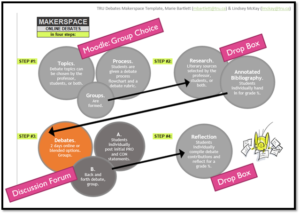
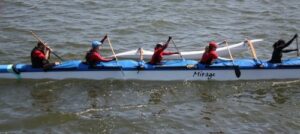


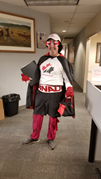
 As we look forward to being back in the classroom in the fall, we think about the pleasure of being back face-to-face with students. No more technical glitches!
As we look forward to being back in the classroom in the fall, we think about the pleasure of being back face-to-face with students. No more technical glitches! You can stand up, move around, and gesture!
You can stand up, move around, and gesture!